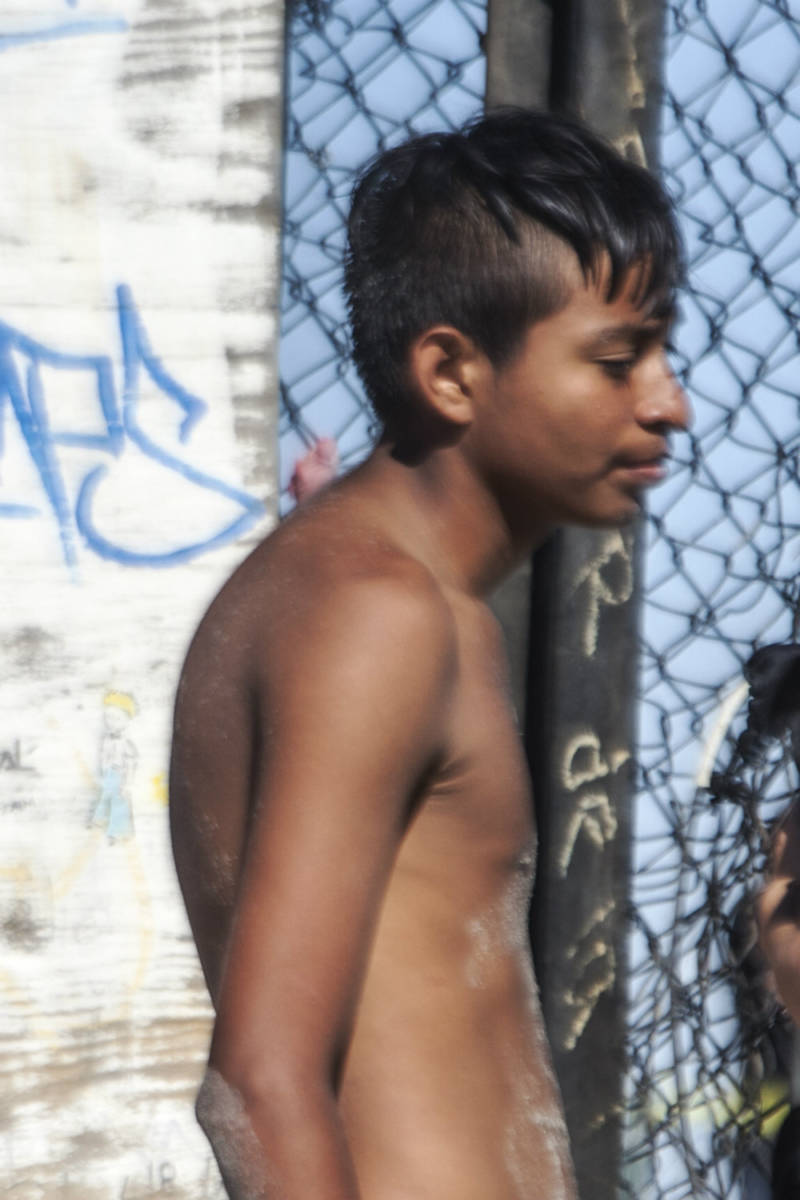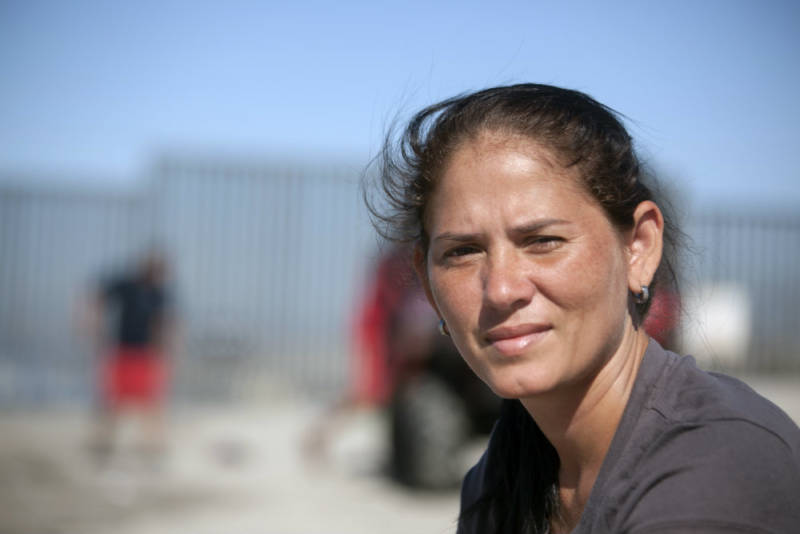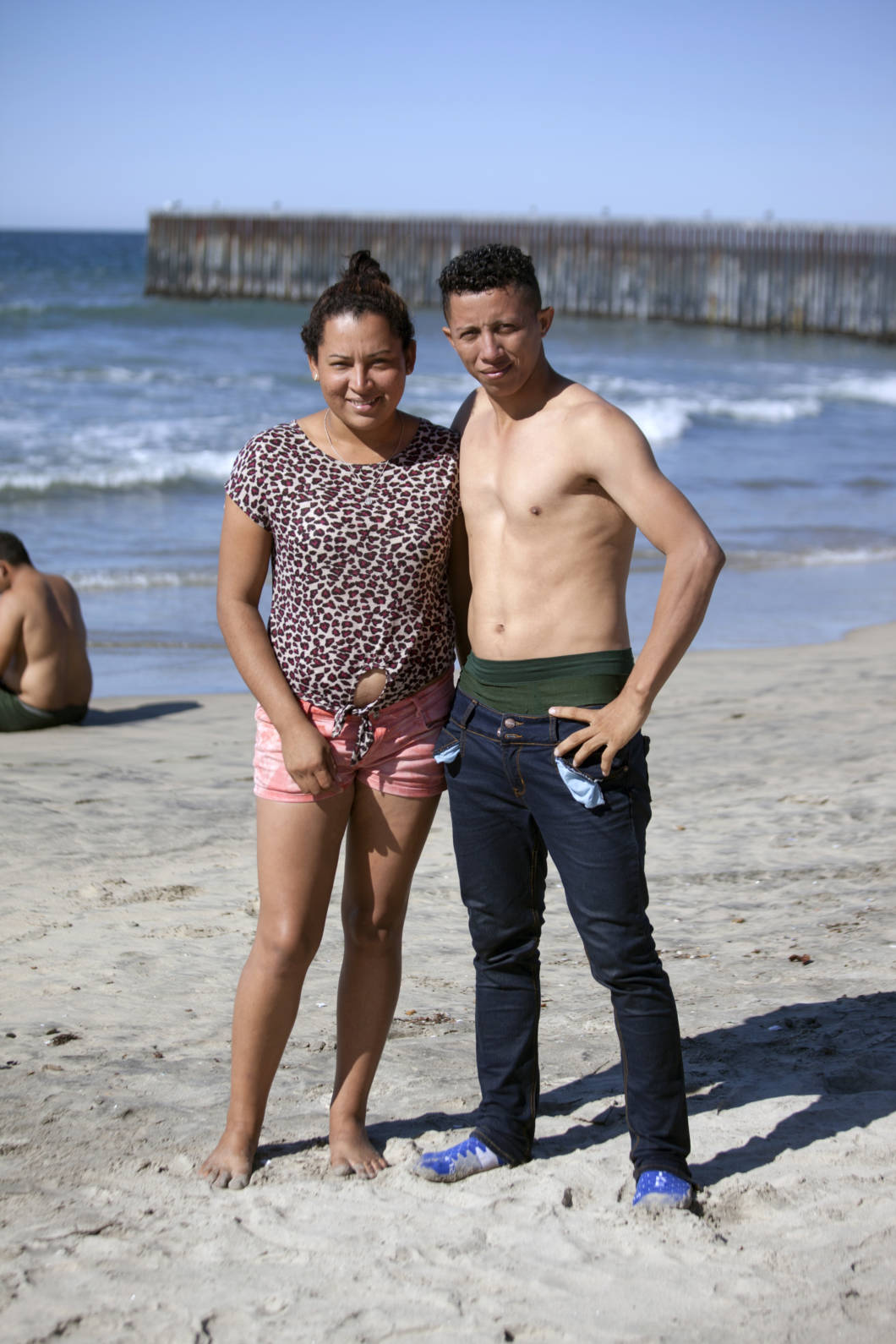KQED’s Sasha Khohka is filing stories from Tijuana, Mexico, where thousands of Central American migrants are expected to arrive in the coming days.
Hundreds of Central American migrants started arriving in Tijuana, Mexico on Wednesday, and many of them headed to the beach as a way to celebrate the end of their journey, to take in views of the ocean and to get cleaned up.
At Playas de Tijuana, dozens of adults and children whooped and splashed around in the chilly Pacific Ocean right next to the tall border fence, a welcome release after days of walking and riding the buses and trucks.

Carlos Celaya, 17, ducked under the waves then rolled on the beach with some younger kids making snow angels in the the sand.
They are among the first group of migrants to arrive, part of the estimated thousands who are making their way through Mexico to reach the U.S. border. Many say they are fleeing violence and poverty and hope to seek asylum in the U.S.
“Honduras is dangerous especially for young men,” said Celaya.
Celaya said he was pressured repeatedly to join a gang and threatened with violence if he didn't. So, he and his brothers set off for California, a place he'd only seen in the movies until he finally caught a glimpse of it through the fence. He said he wanted to find a phone to tell his mom he's safe.
Down the beach, Natalie Osorio, 33, sat on her tiny backpack and a neatly folded blanket, all she'd carried with her from her home in rural Honduras. After three nights without sleep she could hardly keep her eyes open. Osorio said she and other single women protected each other along the way. She said she’s glad she left her two kids at home after watching so many moms struggling with children on the journey.
“After everything it took to get here it would be a tragedy to be deported back to Honduras,” said Osorio.

The future is unclear for migrants like Celaya and Osorio.
The Trump administration recently tightened rules for those seeking asylum. And thousands of troops were deployed to the border to set up razor wire and barriers in anticipation of the migrants’ arrival.
Despite these obstacles, migrants had a more pressing issue to sort out Wednesday night — where to sleep.
Celaya and his brother planned to camp at the beach. But as day turned to night, clashes were reported between Tijuana residents and the migrants.
The locals who were at the beach reportedly sang the Mexican anthem, waved Mexican flags and demanded that the migrants go to an official shelter.


